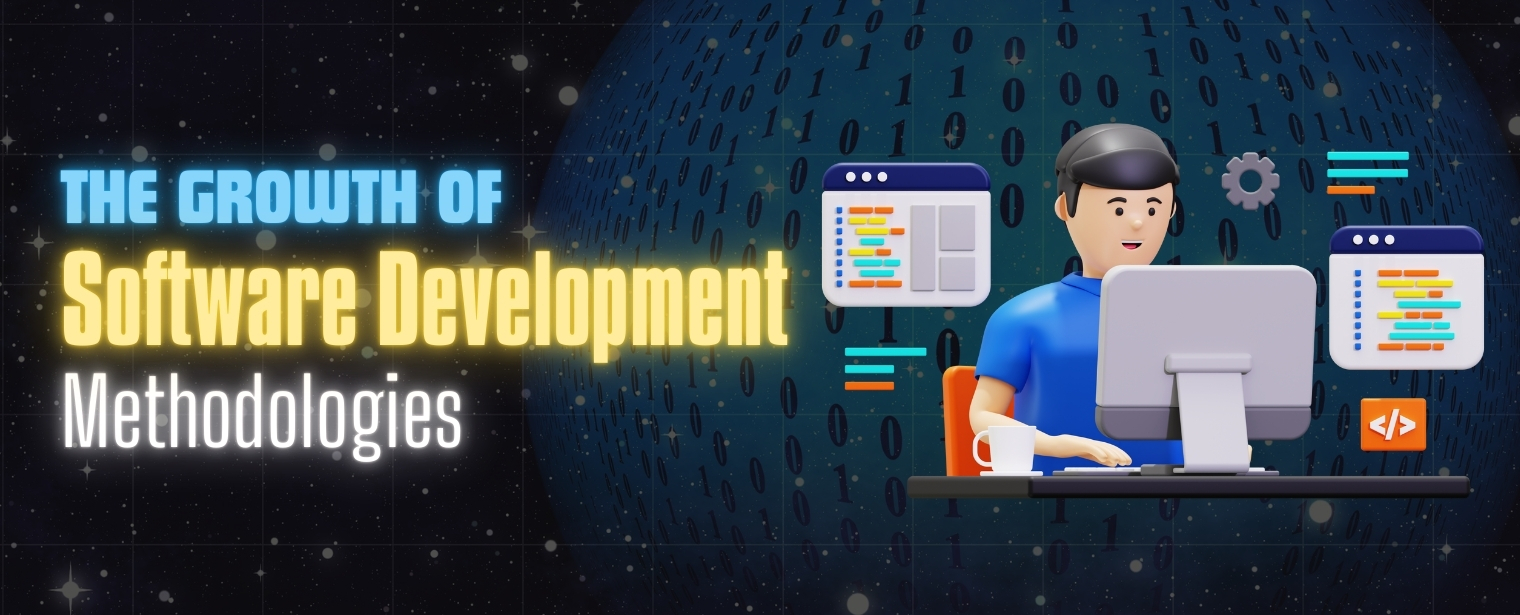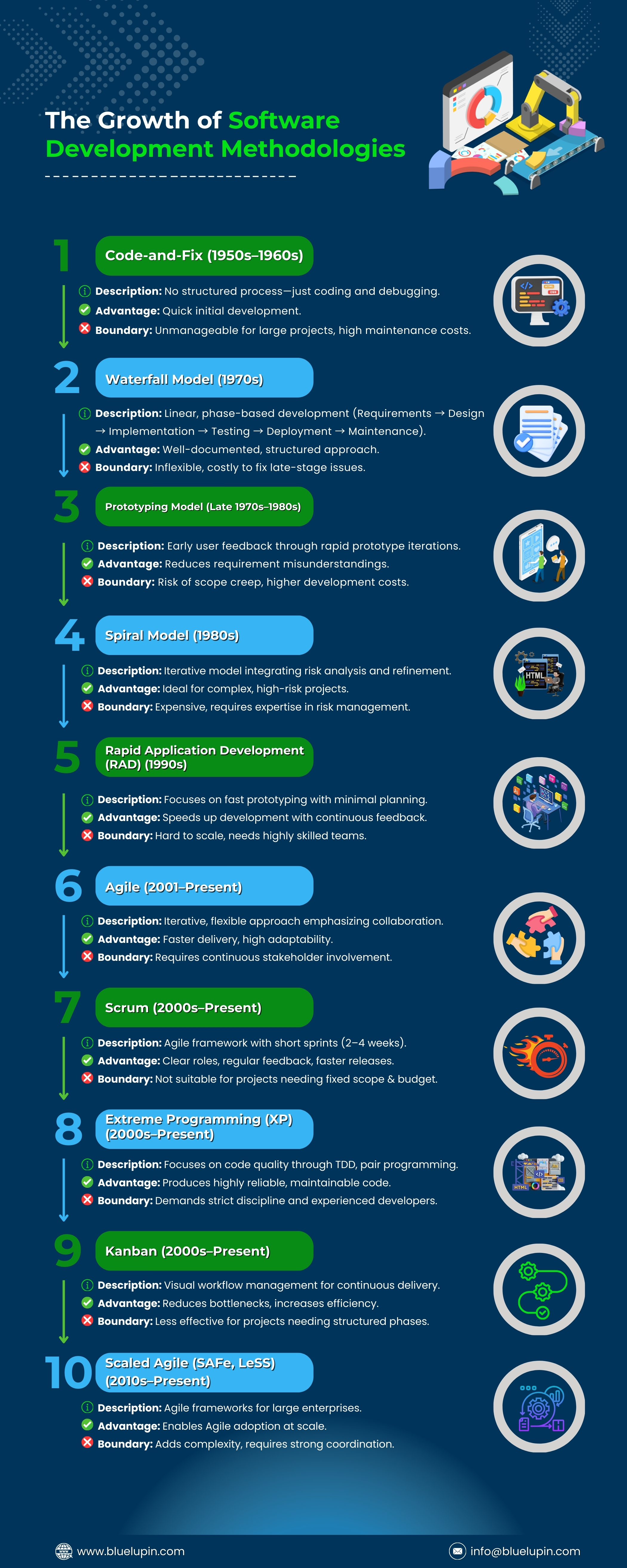The Growth of Software Development Methodologies

The Evolution of Software Development Methodologies: From Waterfall to Agile and Beyond
Software is at the heart of modern life—powering everything from mobile apps to complex enterprise systems. But building reliable and scalable software isn’t just about writing code. It requires a structured approach to ensure efficiency, quality, and adaptability. This is where software development methodologies come into play.
What Are Software Development Methodologies?
Software development methodologies are structured frameworks that guide how software is planned, built, tested, and deployed. They define team collaboration, workflow processes, and project management techniques to create high-quality software efficiently.
Over time, these methodologies have evolved significantly. Early approaches were rigid and sequential, making changes difficult. Today, modern methodologies emphasize flexibility, speed, and collaboration, helping teams deliver software faster while keeping up with evolving business needs.
How Software Development Methodologies Have Evolved
In the 1950s and 1960s, software was developed using the “code-and-fix” method, where programmers simply wrote code and fixed issues as they appeared. While this worked for small-scale projects, it quickly became unmanageable for larger systems.
To bring structure to the process, the Waterfall Model emerged in the 1970s. It introduced a step-by-step approach (Requirements → Design → Development → Testing → Deployment → Maintenance), ensuring each phase was completed before moving on to the next. However, it was inflexible—if mistakes were found late in the process, fixing them was costly and time-consuming.
By the 1980s and 1990s, more iterative approaches like the Spiral Model and Rapid Application Development (RAD) allowed for continuous refinement, but they still had limitations in handling rapidly changing requirements.
The real shift happened in 2001 with the birth of Agile methodologies. Seventeen software experts created the Agile Manifesto, emphasizing flexibility, collaboration, and iterative development over rigid, document-heavy processes. This led to the rise of Scrum, Kanban, and Extreme Programming (XP)—which are still widely used today.
Current Trends & How Companies Are Adopting Agile
Today, Agile dominates the software industry. According to the State of Agile Report 2023 by Digital.ai, over 71% of organizations use Agile in some form. Companies like Microsoft, Google, and Amazon rely on Agile frameworks to release updates quickly and respond to market demands.
Large enterprises, which traditionally followed rigid processes, are now adopting Scaled Agile Frameworks (SAFe, LeSS) to manage multiple teams working on complex software. This is especially useful in finance, healthcare, and government sectors, where structure and compliance are crucial.
Another emerging trend is AI-assisted development. Tools like GitHub Copilot and AI-powered testing frameworks are helping developers automate repetitive tasks, detect bugs early, and write better code faster. While AI is not a methodology itself, it is enhancing Agile workflows and improving efficiency.
Explore the Evolution in Our Infographic
From the early code-and-fix era to the dominance of Agile methodologies, software development has come a long way. Understanding these methodologies is essential for developers, project managers, and businesses looking to optimize their processes and stay competitive. Scroll down to check out our infographic! You’ll see a clear breakdown of 10 key software development methodologies, their advantages, limitations, and how they have shaped modern software engineering.


